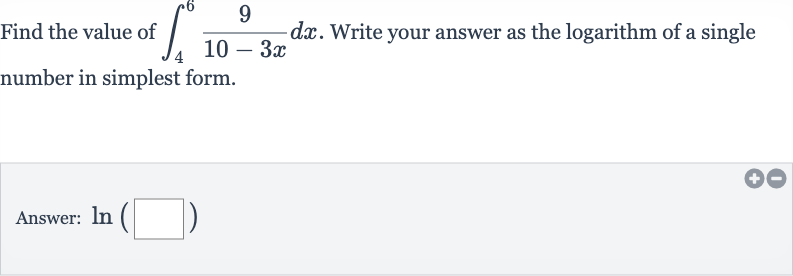Full solution
Q. Find the value of . Write your answer as the logarithm of a single number in simplest form.Answer:
- Recognize standard form natural logarithm: Recognize the integral as a standard form of the natural logarithm function.The integral of dx is equal to , where and are constants. In our case, and .
- Apply formula to integral: Apply the formula to the integral. Using the formula from Step , we get: evaluated from to .
- Evaluate natural logarithm at bounds: Evaluate the natural logarithm at the bounds.First, plug in the upper bound :Since the natural logarithm function only takes positive arguments, we use the absolute value to get .Next, plug in the lower bound :Similarly, we use the absolute value to get .Now we have:
- Simplify the expression: Simplify the expression.Since , we can combine the logarithms:
- Express answer as single number: Express the answer as the logarithm of a single number.Since is equivalent to , we can write the final answer as:

